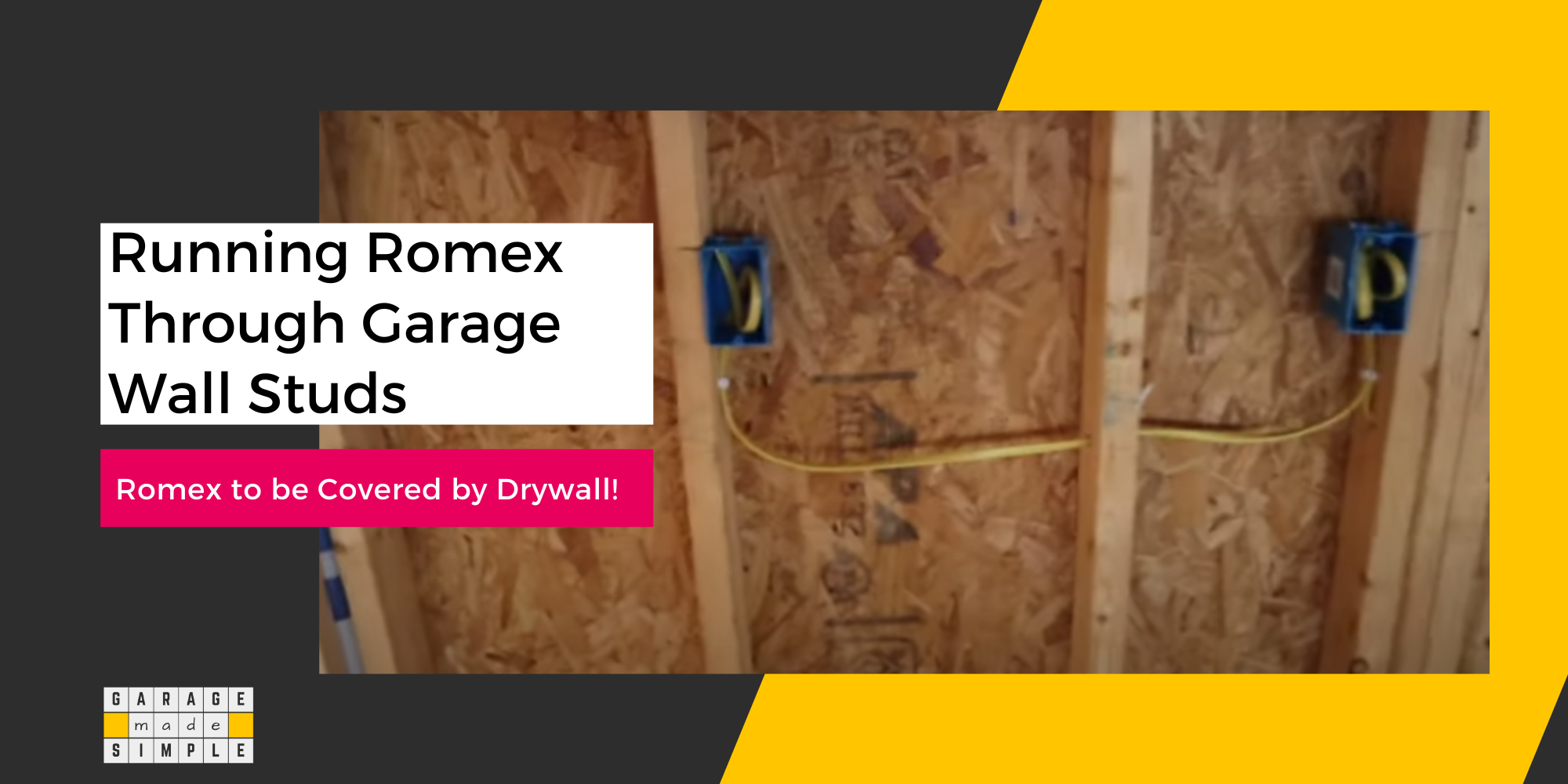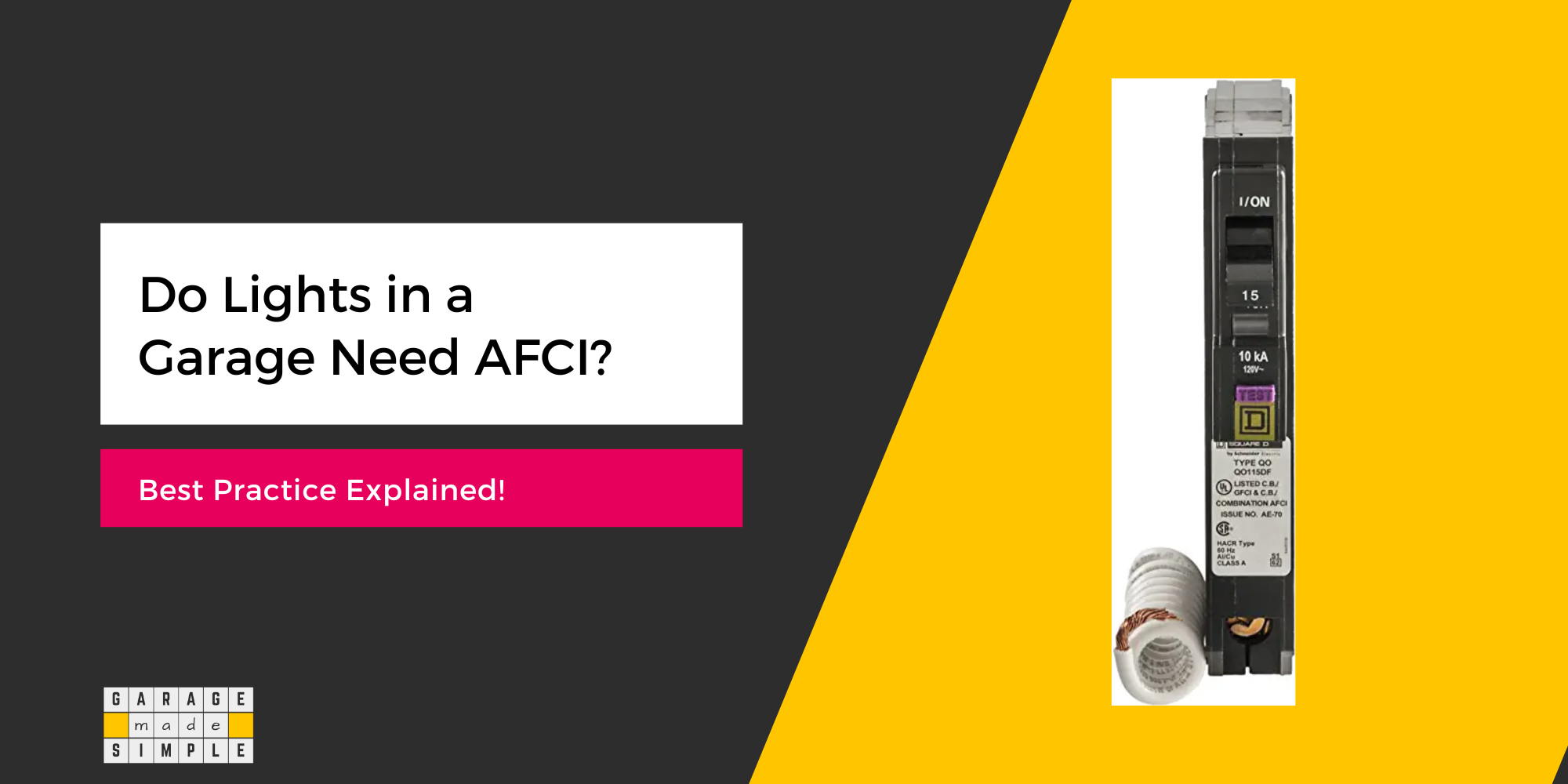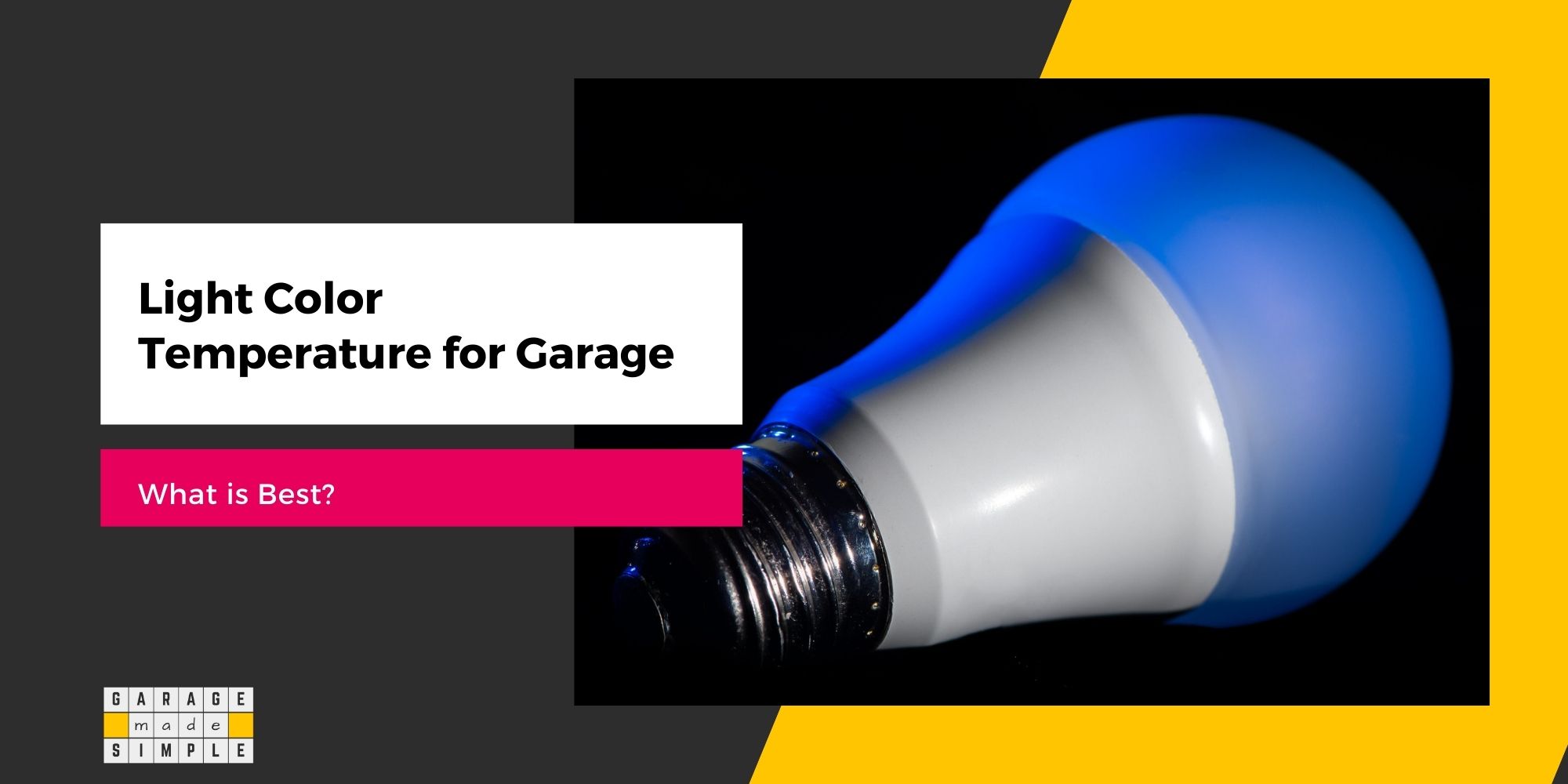Detached Garage Electrical Code: 5 Absolutely Important Sections!
As an Amazon Associate, I earn from qualifying purchases.
Detached Garage Electrical Code: Why Do You Need to Know?
Now that your detached garage is almost ready, electrification should be your next project. Before you start, you must have at least a rudimentary knowledge of the Detached Garage Electrical Code.
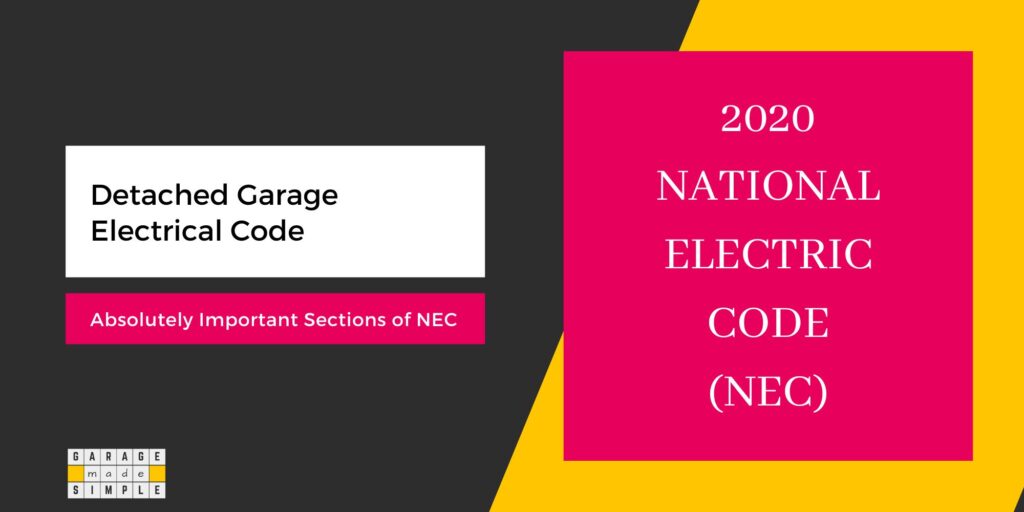
Of course, you need to run a cable from the main panel in the house to a sub-panel in the detached garage. Then you need to do the wiring from the subpanel breakers to the lights, appliances & outlets.
The Detached Garage Electrical Code is the relevant section of the NEC (National Electrical Code).
Some knowledge of the NEC code before doing any electrical work in a detached garage, is important. A detached garage is often used for many purposes, including storing flammable liquids and gases, working with power tools, and charging electric vehicles.
These activities can pose a fire hazard, especially if electrical wiring is incorrectly installed.
Having a basic knowledge of the Detached Garage Electrical Code, as laid out by NEC, before doing any electrical work in a detached garage, will ensure:
- Safety: The NEC code is designed to protect people and property from electrical hazards. It includes requirements for wiring methods, equipment, and safety devices. By following the NEC code, you can help to reduce the risk of fire, electrical shock, and other accidents.
- Compliance: Many municipalities require homeowners to obtain a permit, followed by an inspection. The electrical work must comply with the NEC code to pass inspection.
- Insurance Claim Processing: If you have a fire or other electrical accident in your detached garage, your insurance company may deny your claim if your electrical work was not done to code.
Before you get into all that you better get to know NEC, at least the basics.
Detached Garage Electrical Code: Key Takeaways
| Topic | Key Takeaway |
|---|---|
| Why do you need to know? | To ensure safety, compliance, and insurance claim processing. |
| What is NEC? | The National Electrical Code is the benchmark for safe electrical design, installation, and inspection. |
| What is the code for Branch Circuits? | Section 210.11(C)(4) requires at least one 120-volt, 20-ampere branch circuit shall be installed. |
| What is the code for Outlets? | Section 210.52(G)(1) requires at least one 20-amp outlet in each vehicle bay, located not higher than 5 ½ ft. All outlets must be GFCI protected. |
| What is the code for Receptacle Spacing? | Section 210.52(A)(1) requires that no point in the garage measured horizontally is more than 6 ft. from an receptacle outlet. |
| What is the code for GFCI? | Section 210.8 (A) requires that all 125-volt, single-phase, 15- and 20-ampere receptacles shall have GFCI protection for personnel.. |
What is the National Electrical Code (NEC)?
2023 National Electrical Code (NEC) is the latest version that covers everything electrical, including homes & garages. The National Fire Protection Association (NFPA) issues NEC and updates it every three years.
In their own words:
Adopted in all 50 states, NFPA 70, National Electrical Code (NEC) is the benchmark for safe electrical design, installation, and inspection to protect people and property from electrical hazards.
NFPA 70
The NEC code applies to all 50 states of the US, but different states may be at different stages in their adoption process. To find out at which stage your state is and therefore the version that applies to your state please check the link to NFPA – NEC Adoption Map.
What Is the Electrical Code for Outlets in a Garage?
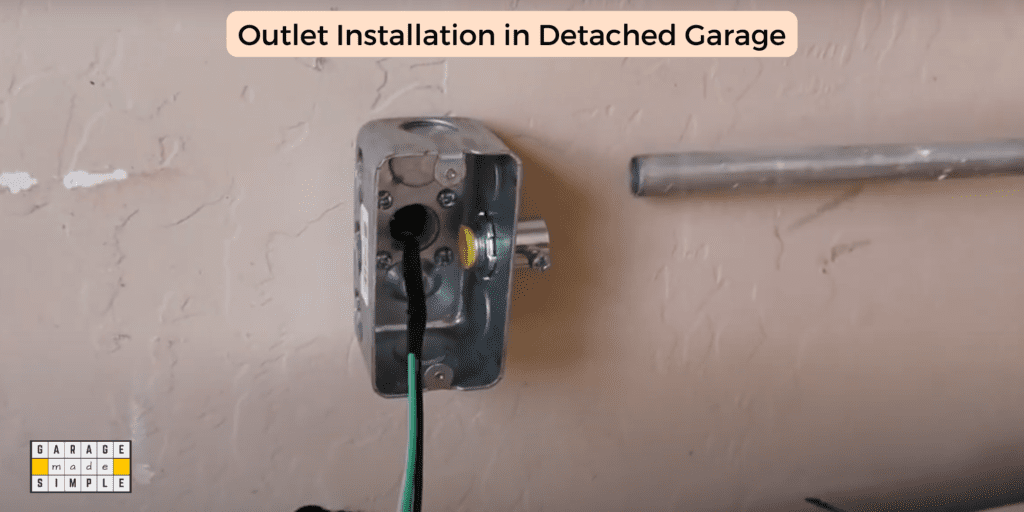
An important section when it comes to detached garage electrical code is:
Section 210.11(C)(4) Garage Branch Circuits
Section 210.11(C)(4) Garage Branch Circuits is specific to outlets in a garage and states that:
In addition to the number of branch circuits required by other parts of this section, at least one 120-volt, 20-ampere branch circuit shall be installed to supply receptacle outlets required by 210.52(G)(1) for attached garages and in detached garages with electric power. This circuit shall have no other outlets.
Exception: This circuit shall be permitted to supply readily accessible outdoor receptacle outlets.
The important point to note here is that the above code uses the word “at least”. There is no mention of “at most”. So, while having just one outlet will make your garage code-compliant, it is hardly a practical solution.
You certainly need many more outlets in your garage, located at a convenient distance from each other. The biggest advantage of having sufficient outlets, especially in a 2 or 3-car garage is that you can plug in vacuum cleaners, pressure washers, floor heaters, or extra lights, without running long lines of extension cords.
Extension cords are not the safest electrical devices. People tripping over extension cords is not uncommon. Old frayed extension cords can also cause sparking and short-circuiting.
Section 210.11(C)(4) Garage Branch Circuits refers to Section 210.52(G)(1) Garages. Hence, to fully understand the detached garage electrical code, you must consider:
Section 210.52(G)(1) Garages
Section 210.52(G)(1) Garages is specific to where the outlet must be placed and states that:
In each attached garage and in each detached garage with electric power, at least one receptacle outlet shall be installed in each vehicle bay and not more than 1.7 m (5 ½ ft) above the floor.
Exception: Garage spaces not attached to an individual dwelling unit of a multifamily dwelling shall not require a receptacle outlet in each vehicle bay.
Based on this section:
- An attached garage should have at least one outlet per parking bay located not higher than 5 ½ ft.
- A detached garage should have at least one outlet (irrespective of the number of parking bays) located not higher than 5 ½ ft.
How High Should an Outlet Be in a Garage?
The outlet(s) that are required to comply with Section 210.52(G)(1) Garages must not be higher than 5 ½ ft. However, there is no code for how low they can be. For practical reasons, namely convenience and to prevent floor water from reaching them, the ideal height is between 12” and 18”.
The other outlets in the garage that do not need to comply with Section 210.52(G)(1) Garages can be placed at any height that is convenient and will let the cord run as straight and short as possible.
Some recommended (not mandatory) heights are:
| Appliance / Utility | Height |
| Workshop Table or Bench | 34” – 38” |
| Table for Computers & Accessories | 28” – 30” |
| Household Appliances such as Refrigerators etc. | 48” |
| Garage with lot of DIY Activity (The height will let you place a drywall or plywood board against the wall without obstructing the outlet) | 50” |
| Garage Door Opener | On Garage Ceiling |
How Far Apart Should Outlets Be Spaced?
There is no specific provision for how far apart outlets should be in a garage. However, Section 210.52 Dwelling Unit Receptacle Outlets has regulations for the habitable spaces of the home.
While a garage may not fall under the purview of habitable space, there is no harm in following the same guidelines as those for habitable spaces. The relevant Section is:
Section 210.52(A)(1) Spacing
Section 210.52(A)(1) Spacing states that
Receptacles shall be installed such that no point measured horizontally along the floor line of any wall space is more than 1.8 m (6 ft) from a receptacle outlet.
Do All Garage Outlets Need to Be GFCI?
Both, the 2023 National Electric Code (NEC) and the 2021 International Residential Code (IRC) require that all receptacles in a garage must be GFCI.
Section 210.8 of 2023 NEC Ground-Fault Circuit-Interrupter Protection for Personnel
Section 210.8 of 2023 NEC Ground-Fault Circuit-Interrupter Protection for Personnel states that
Ground-fault circuit-interruption for personnel shall be provided as required in 210.8(A) through (F). The ground-fault circuit-interrupter shall be installed in a readily accessible location.
The following subsection is important as it clarifies further.
Section 210.8 (A) Dwelling Units
Section 210.8 (A) Dwelling Units states
All 125-volt, single-phase, 15- and 20-ampere receptacles installed in the locations specified in 210.8(A)(1) through (11) shall have ground-fault circuit-interrupter protection for personnel.
The garage is listed as one of the locations in Sections 210.8(A)(1) through (11) and as such the detached garage electrical code requires all outlets in a detached garage to be GFCI protected.
For more details on detached garage electrical code related to GFCI requirements, do check out the following earlier posts:
- Why Is GFCI Required In Garage? (A Simple Way To Stay Safe!)
- Do Garage Lights Need to Be GFCI Protected? (Enlightening Facts!)
Statewide Status of NEC Code Enforcement as of July 1, 2023
Below are 2 maps that give the statewide status of NEC Code Enforcement as of July 1, 2023 (Data Source: NEC Adoption & Use)
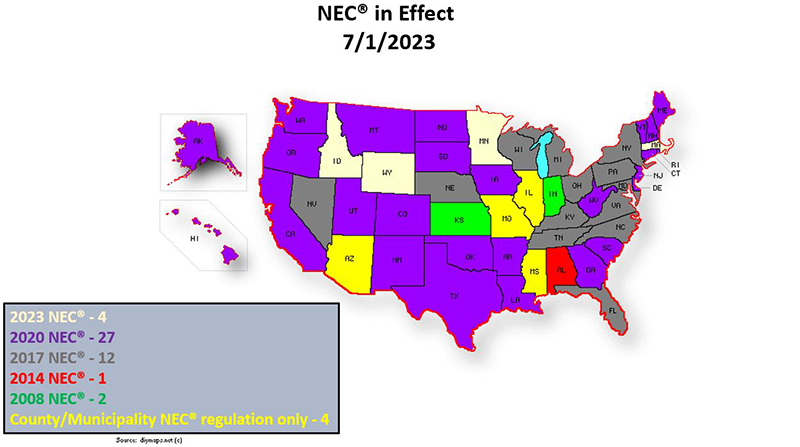
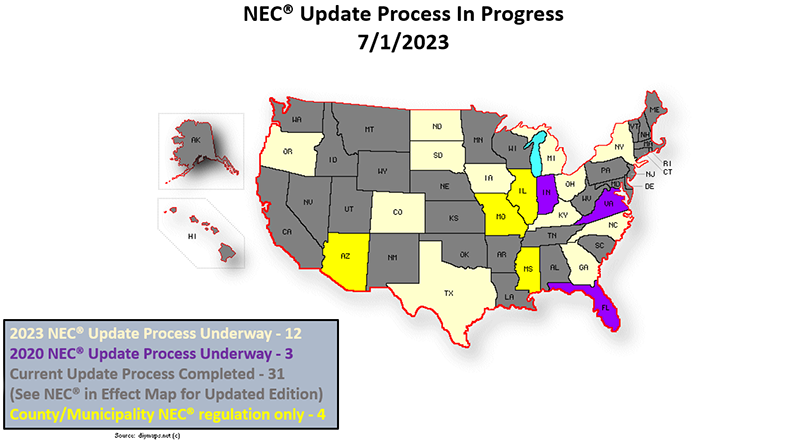
Wiring Methods for Detached Garages
Please select the right wiring method to ensure code compliance and long-term electrical safety. The most common options to consider are:
- Conduit Options:
- PVC Conduit is a durable, moisture-resistant option. PVC conduit is ideal for underground wiring to the garage, as it protects the wires against damp soil and water exposure.
- EMT Conduit (Electrical Metallic Tubing) is commonly used for above-ground applications. Its metallic structure resists physical damage and provides excellent grounding capabilities.
- Cable Types:
- NM Cable (Non-Metallic) is cost-effective for indoor garage wiring but not for outdoor or underground installation.
- UF Cable (Underground Feeder) is designed for direct burial without needing conduit, making it a good choice for bringing power from the main house to the detached garage.

Understanding garage wiring layouts and garage wiring diagrams is important.
Grounding Requirements for Detached Garages
Proper grounding is essential in detached garages to protect against electrical faults. It is a requirement for electrical safety and code compliance as it prevents dangerous electric shocks and minimizes fire risks.
- Grounding Electrode System: A reliable grounding electrode, often a metal ground rod driven into the earth, establishes a stable path for fault current. Detached garages with electrical panels need their own grounding system to meet electrical inspection standards.
- Bonding Requirements: When a detached garage has an electrical panel, bonding the ground and neutral correctly, is critical.
Sub-panels for Detached Garages
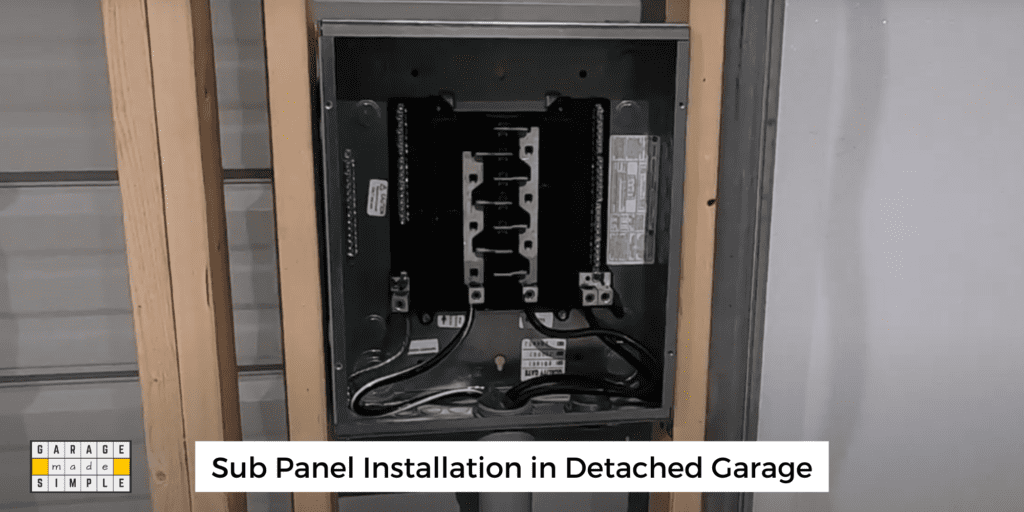
Installing a sub-panel in a detached garage is often necessary to power multiple circuits, such as the garage workshop, or high-power equipment like EV charging stations.
Here’s a quick guide on sub-panels for detached garages:
- When to Install a Sub-Panel: A sub-panel is recommended if the garage requires several circuits for high-demand tools. Calculating the load requirements for all planned equipment lets you determine the correct sub-panel capacity.
- Load Calculation and Panel Selection: The panel size depends on the combined load of all equipment. For instance, power tools, compressors, and EV chargers will need dedicated circuits and sufficient amperage capacity to avoid overloads.
- Installation Steps: Installing a sub-panel involves mounting the panel, securing necessary permit requirements, connecting appropriate wiring, and following electrical inspection standards. Proper grounding and bonding must be maintained.
Including a garage electrical panel enables safer circuit control and minimizes trips to the main breaker, ensuring a more organized and functional garage setup.
Electrical Loads for Common Garage Equipment
Understanding the electrical loads of typical garage equipment is essential for effective garage wiring layout and circuit planning.
- Typical Equipment Loads: Common garage tools like air compressors, power saws, and even refrigerators have specific load requirements. For example, power tools may need 15-20 amps, while heavy-duty machinery might require 30 amps or more.
- Planning for EV Chargers: EV chargers typically need dedicated circuits and specific amperage. Please consult a professional for garage circuit breaker selection.
- Breaker and Outlet Guidelines: Choose circuit breakers that match the amperage requirements of each piece of equipment. Maintain recommended garage outlet height and incorporate garage GFCI requirements to prevent electrical shocks, especially in areas with high moisture.
DISCLAIMER: What Is the Safest Way to Handle Electrical Wires?
This post is for information only. I strongly recommend that all electrical work should be entrusted to licensed professional electricians. In case you do decide to do some of the work yourself, make sure that:
“Treat all electrical wiring, even “de-energized” ones as if it is live, unless it has been locked out and tagged”
You must follow the basic safety guidelines:
- Use protective eyewear, especially when drilling or grinding metal
- Wear insulated rubber gloves when working on any circuit or branch circuit
- Always use insulated tools while working with electricity
- De-energize the electrical wires on which you will be working. Tag the circuit breaker to prevent someone from switching it on accidentally
- Electrical wiring in wet or damp locations or underground must be within a PVC conduit
- Underground wiring conduits should be at least 18 inches below grade as per code
- All receptacles for equipment that could be in wet or damp locations should be equipped with Ground Fault Circuit Interrupter (GFCI)
- Never use old frayed cables, damaged insulation, or broken plugs
- High-voltage equipment should be properly grounded to ensure electricity flows directly to the ground and not through the person in contact with the live wire
Thank you very much for reading the post. I do hope you found it informative and useful.

